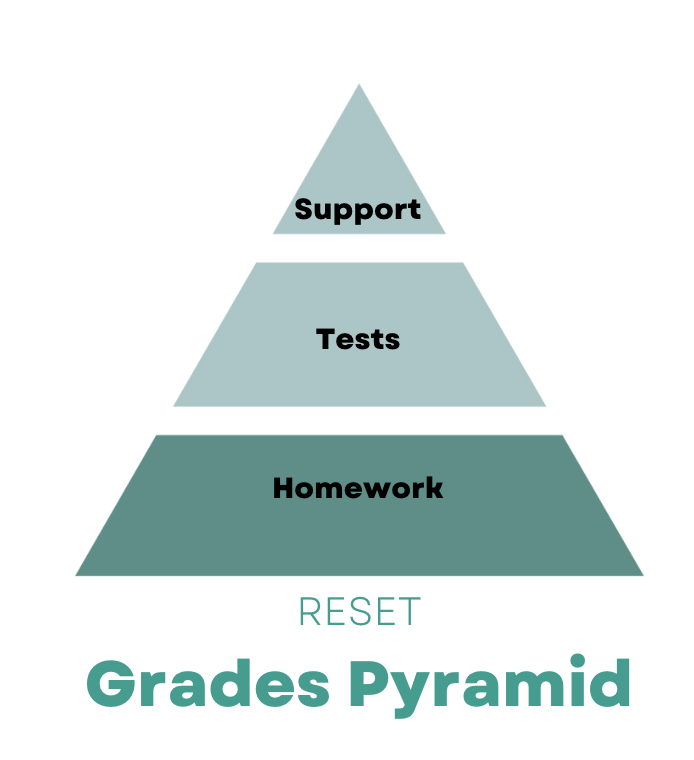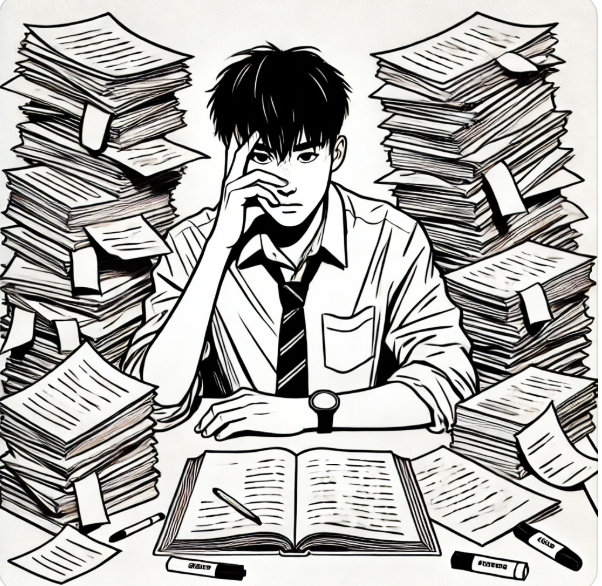Why Some Students Turn Their Grades Around Fast (And Others Don't)
A common call we get at RESET:
Hi, I need help with my son. He's taking 4 APs, playing varsity, and yes - on his phone too much. But what's really worrying me is his grades. It's like his old tricks aren't working anymore - the material is just too complex to wing it like he used to.
We get it. This is a pattern we see often: families reach out when their student hits sophomore or junior year. Why? Because school has hit a tipping point. Those old strategies - winging it, relying on natural smarts, skimming just enough to get by - don’t work anymore.
We've seen both quick turnarounds and gradual progress at RESET.
Some students just need a few changes - maybe better routines, someone “looking over their shoulder,” more studying - and the C’s go to B’s. Others make slower progress, taking two steps forward and one step back, as they build new academic muscles.
The key questions become: What's really happening here? And if your student is struggling, where should you begin?
The RESET School Pyramid
Grades aren't random. They come from a few core areas: assignments, tests, and participation. Different teachers emphasize these elements differently.
Some courses are homework-heavy, where simply turning in assignments consistently can secure a passing grade. Others put more weight on tests, and struggling on exams can bury your grade. And in some classes, participation and engagement matter a lot; raise your hand, contribute to group projects, and so on.
At RESET, we think of academic success as a pyramid:
The foundation is homework completion. Most students who consistently turn in assignments end up with at least B's. This includes some “Google Classroom Detective Work” together with your teen, and then … a simple, repeatable structure that they believe in and can execute.
The middle is test performance. We see a lot of variation in “studying skill.” Some kids get how to study, and may not want to. Others struggle with how to study.
At the top is school engagement. Use tutoring, office hours, and teacher help effectively. This is can be quite challenging as it involves task initiation and planning and time management. This is something our teens leverage once they have their other systems going, or in concert with other parts of the pyramid.
When a student is struggling, we don't just say "work harder." We diagnose where the breakdown is happening and fix it from the ground up.
Let's take Seamus, a junior in high school, as an example.
Starting with the Foundation: Homework Completion
We took a random sample of Seamus’ last 50 assignments, and found that he turned in 9 of them.
Our first step was understanding why. In our experience, students typically avoid homework for one of three reasons: the work is straightforward but feels overwhelming to start, the assignments feel too difficult and they don't know how to begin, or they forgot about it entirely.
For Seamus, we discovered it was mostly the first case. He could do the work, but getting started felt overwhelming. He was avoidant.
For students who struggle to “get going,” our solution can is simple: focus on the smallest possible step.
For some students, this is opening the book or document. For others, it’s writing their name on the page. For others, it’s telling their coach how to do the first problem.
We often model this at RESET. We do the first question together, right there in our session. Don’t talk about it, don’t abstract on the “why,” just get started, and see what happens. From there, we deploy a number of strategies to make this a sustainable habit -
Use timers! Break assignments into 5-minute chunks (some students longer, some students shorter)
Be weirdly competitive. Texting someone that you want to have the assignment “done” by a certain time (we often play this role at first) - and then following up with that person.
Friendly betting. This works especially well for routine, boring assignments. “Let's see who can finish five math problems first, but you only win if they're all correct.”
Studying alongside someone. This can also be done virtually.
Often for our clients the hardest part of homework isn't the work itself; it's the mental hurdle of getting started. Once Seamus began working, he usually found he could continue.
Moving Up: Fixing Test Performance
"It's an open-note quiz!" Seamus's mom was irritated. "He has four pages of notes right in front of him. How is he still failing?"
We hear this a lot. A student diligently copies down information, maybe does some highlighting, and feels prepared. Then the test comes, and the results are disappointing.
We discovered Seamus had beautiful notes. Detailed. Thorough. And almost useless during a test.
Why? His model was wrong. We rebuilt his approach from scratch.
First, we studied his old quizzes. His teacher had patterns. Seamus's notes, while detailed, weren't targeting what actually showed up on tests. We realigned his note-taking to match her focus.
Next, we reorganized everything. During an open-note test, you can't waste precious minutes flipping through walls of text. We added clear headings. This made finding things easier for him.
Then the real breakthrough. We stopped letting Seamus only copy from the textbook. Instead, we challenged him to explain complex events in his own words. When studying Andrew Johnson's presidency, he had to articulate why Congress turned against him, and what his presidency meant for the decades that followed.
These weren't formal essays. We call it “Seamus Language.” We had him talk through historical events like he was explaining them to a friend, or even a younger sibling. It felt casual, even conversational. But it worked. By forcing himself to reframe these events in his own words, he started actually understanding them, not just memorizing facts about them.
Within a month, those failing quiz grades started turning around.
The Final Piece: Using Available Support
With homework and study skills improving, we addressed the last challenge: getting Seamus to use the resources available at school.
His school offered extensive support: teachers available after class, a tutoring center, online study guides. But like many struggling students, he never used them.
The reasons were familiar. He typically waited until he was already struggling badly, at which point it felt too late to ask for help. He worried that seeking support would make him look like he was falling behind. And like many students, he simply wasn't comfortable initiating those conversations with teachers.
Our solution was to start small. Each week, we had Seamus commit to one simple action:
Send one email to a teacher with a question
Stop by office hours once every couple of weeks
Ask one clarifying question after class
Many of our clients need help with drafting the emails! But trust us - teachers LOVE this kind of thing.
After a few weeks, he got more comfortable advocating for himself. And the teachers came to appreciate the “new Seamus.”
What This Means for Parents
If your child is struggling academically, yes sometimes they need to just … work harder. But zoom out with them. Instead of trying to fix everything at once, look at each layer of the pyramid:
Are assignments getting turned in? If not, why?
Are they actually studying for tests, or just going through the motions?
Are they using the help that's available?
Most importantly, ask yourself: what's the easiest win we can get first?



